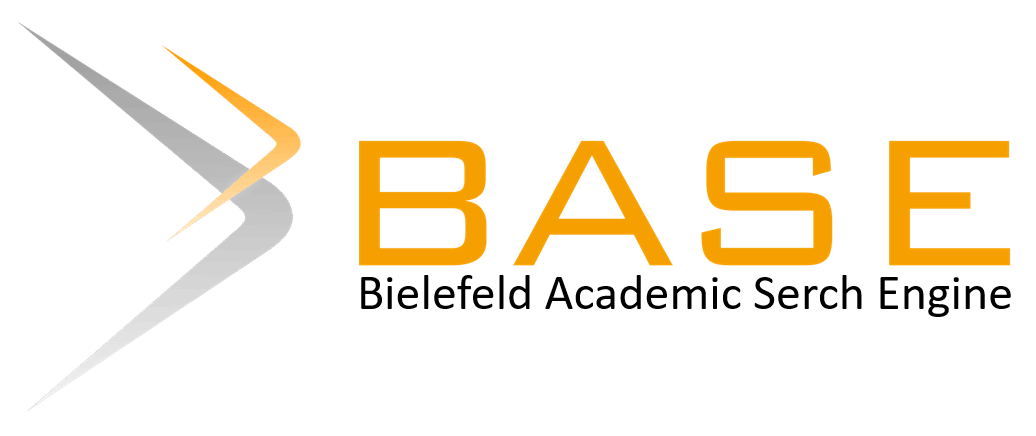Development of visual representation skills assessment for animal biosystematic subject
Abstract
Objective and consistent assessment is an important component in the learning process, especially in higher education. In practical courses such as animal biosystematics, students are not only required to understand theoretical concept, but also develop visual representation skills. Standardization in assessment is very necessary to ensure that each student is assessed fairly based on the same criteria. This study aimed to development of visual representation skills assessment for animal biosystematics subject. This research was conducted at a university in Bandung. Held in lectures in the even semester with involving 37 students, 4 lectures, 4 practicum assistants, and 1 laboratory assistant. This visual representation skills assessment was develop using the ADDIE model. Data is strengthened through interviews and questionnaire. The analysis process consists of collecting information, simplifying information, presenting information, and drawing conclusions. This study successfully developed a visual representation skills assessment instrument for the Animal Biosystematics subject. The instrument comprises three rubrics morphology, anatomy, and skeleton each with indicators evaluating proportional accuracy, characteristic features, descriptive clarity, and proper annotation. These rubrics provide a structured and comprehensive tool to assess the accuracy and clarity of students’ scientific drawings.
Keywords
Full Text:
PDFReferences
Ainsworth, S. (2006). DeFT: A conceptual framework for considering learning with multiple representations. Learning and Instruction, 16(3), 183–198. https://doi.org/10.1016/j.learninstruc.2006.03.001
Black, P., & Wiliam, D. (2009). Developing the theory of formative assessment. Educational Assessment, Evaluation and Accountability, 21(1), 5–31. https://doi.org/10.1007/s11092-008-9068-5
Brookhart, S. M. (2013). How to create and use rubrics for formative assessment and grading. ASCD.
Chen, Y., & Zhai, J. (2025). Plant awareness in science education: An examination of image representation and labelling in primary school textbooks. Journal of Biological Education, 1–18. https://doi.org/10.1080/00219266.2025.2502376
Ealy, J. B. (2018). Assessment of students’ external representations of mmCIF entries and their biochemical knowledge. Biochemistry and Molecular Biology Education, 46(6), 634–643. https://doi.org/10.1002/bmb.21183
East, A., Campolongo, E. G., Meyers, L., Rayeed, S. M., Stevens, S., Fluck, I. E., Girón, J. C., Jousse, M., Lowe, S., Betancourt, I., Charney, N., Donoso, E., Fox, N., Landsbergen, K. J., Nepovinnykh, E., Ramirez, M., Singh, P., Thapa-Magar, K., Waite, E., … Record, S. (n.d.). Optimizing image capture for computer vision-powered taxonomic identification and trait recognition of biodiversity specimens.
Fenwick, L., & Unsworth, L. (2023). Including visual representations within senior high school biology assessment: Considerations of grammatical complexity. The Curriculum Journal, 34(3), 412–436. https://doi.org/10.1002/curj.181
Fraenkel, J. R., Wallen, N. E., & Hyun, H. H. (2012). How to design and evaluate research in education (8th ed). McGraw-Hill Humanities/Social Sciences/Languages.
İnaltekin, T., & Goksu, V. (2019). Evaluation of Students’ Use of Visual Learning Representations in Science Classes: A Case Study from Turkey. Journal of Education in Science, Environment and Health. https://doi.org/10.21891/jeseh.541917
Jain, D. (2024). Bridging art and science: the role of botanical illustrations in plant taxonomy. ShodhKosh: Journal of Visual and Performing Arts, 5(6). https://doi.org/10.29121/shodhkosh.v5.i6.2024.4164
Joo, H., Park, J., & Kim, D. (2021). Visual representation fidelity and self-explanation prompts in multi-representational adaptive learning. Journal of Computer Assisted Learning, 37(4), 1091–1106. https://doi.org/10.1111/jcal.12548
Juanengsih, N., Rahmat, A., Wulan, A. R., & Rahman, T. (2021). Semantic networks as mental representation of students in reading images on cell biology. Journal of Physics: Conference Series, 1836(1), 012074. https://doi.org/10.1088/1742-6596/1836/1/012074
Khan, F. M. A., & Masood, M. (2012). Effectiveness of visual animation-narration presentation on student’s achievement in the learning of meiosis. Procedia - Social and Behavioral Sciences, 46, 5666–5671. https://doi.org/10.1016/j.sbspro.2012.06.493
Knain, E., Fredlund, T., & Furberg, A. (2021). Exploring student reasoning and representation construction in school science through the lenses of social semiotics and interaction analysis. Research in Science Education, 51(1), 93–111. https://doi.org/10.1007/s11165-020-09975-1
Ladisa, S., Rahmat, A., & Supriatno, B. (2020). Analisis kemampuan representasi visual dan representasi verbal mahasiswa pada materi morfologi tumbuhan serta hubungannya dengan kemampuan visual dan kemampuan verbal umum: analysis of visual representation and verbal representation of students on plant morphology materials and its relationship to visual and verbal abilities. Jurnal Psikologi Jambi, 5(1), 43–49. https://doi.org/10.22437/jpj.v6iJuli.11745
Langbeheim, E., Ben-Eliyahu, E., Adadan, E., Akaygun, S., & Ramnarain, U. D. (2022). Intersecting visual and verbal representations and levels of reasoning in the structure of matter learning progression. Chemistry Education Research and Practice, 23(4), 969–979. https://doi.org/10.1039/D2RP00119E
Ling, J. H. (n.d.). A Review of Rubrics in Education: Potential and Challenges.
Mayer, R. E. (2014). Cognitive Theory of Multimedia Learning. In R. E. Mayer (Ed.), The Cambridge Handbook of Multimedia Learning (2nd ed., pp. 43–71). Cambridge University Press. https://doi.org/10.1017/CBO9781139547369.005
Menendez, D., Donovan, A. M., Mathiaparanam, O. N., Klapper, R. E., Yoo, S. H., Rosengren, K. S., & Alibali, M. W. (2024). The Role of Visual Representations in Undergraduate Students’ Learning about Genetic Inheritance. Education Sciences, 14(3), 307. https://doi.org/10.3390/educsci14030307
Mnguni, L., & Moyo, D. (2021). An assessment of the impact of an animation on biology students’ visualization skills related to basic concepts of mitosis. Eurasia Journal of Mathematics, Science and Technology Education, 17(8), em1997. https://doi.org/10.29333/ejmste/11116
Olson, J. M., & Krysiak, R. (2021). Rubrics as tools for effective assessment of student learning and program quality: In T. P. Fudge & S. S. Ferebee (Eds.), Advances in Mobile and Distance Learning (pp. 173–200). IGI Global. https://doi.org/10.4018/978-1-7998-7653-3.ch010
Rayeed, S. M., East, A., Stevens, S., Record, S., & Stewart, C. V. (2025). BeetleVerse: A study on taxonomic classification of ground beetles (No. arXiv:2504.13393). arXiv. https://doi.org/10.48550/arXiv.2504.13393
Sadler, D. R. (2009). Indeterminacy in the use of preset criteria for assessment and grading. Assessment & Evaluation in Higher Education, 34(2), 159–179. https://doi.org/10.1080/02602930801956059
Tang, K. (2023). The characteristics of diagrams in scientific explanations: Multimodal integration of written and visual modes of representation in junior high school textbooks. Science Education, 107(3), 741–772. https://doi.org/10.1002/sce.21787
Treagust, D. F., & Tsui, C.-Y. (Eds.). (2013). Multiple representations in biological education (Vol. 7). Springer Netherlands. https://doi.org/10.1007/978-94-007-4192-8
Utami, R. K., & Subiantoro, A. W. (2021). Visual representations analysis of senior high school biology textbooks about plants’ structure and function: 7th International Conference on Research, Implementation, and Education of Mathematics and Sciences (ICRIEMS 2020), Yogyakarta, Indonesia. https://doi.org/10.2991/assehr.k.210305.019
Virk, A., Joshi, A., Mahajan, R., & Singh, T. (2020). The power of subjectivity in competency-based assessment. Journal of Postgraduate Medicine, 66(4), 200–205. https://doi.org/10.4103/jpgm.JPGM_591_20
Yang, M., Armpriest, B. C., Wright, L. K., & Newman, D. L. (2025). Visual representations of energy and chemical bonding in biology and chemistry textbooks: A case study of ATP hydrolysis. Biochemistry and Molecular Biology Education, 53(3), 274–285. https://doi.org/10.1002/bmb.21894
Yoon, H.-G., Kim, M., & Lee, E. A. (2021). Visual representation construction for collective reasoning in elementary science classrooms. Education Sciences, 11(5), 246. https://doi.org/10.3390/educsci11050246
Zhang, K. E., & Jenkinson, J. (2024). The visual science communication toolkit: Responding to the need for visual science communication training in undergraduate life sciences education. Education Sciences, 14(3), 296. https://doi.org/10.3390/educsci14030296
DOI: https://doi.org/10.17509/aijbe.v8i2.85892
Refbacks
- There are currently no refbacks.
 AIJBE is under Creative Commons Attribution-ShareAlike 4.0 International License
AIJBE is under Creative Commons Attribution-ShareAlike 4.0 International License








